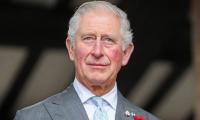By News report
PARIS/MADRID/WUHAN/ROME/NEW DELHI/NY/WASHINGTON: More than 655,000 cases of the new coronavirus have been officially recorded while over 34,000 deaths with over 3,000 new deaths reported around the world since the outbreak of the epidemic. The coronavirus hit 198 countries and territories.
The United States had 104,837 cases of which 1,711 were fatal. Italy had the highest number of deaths at 9,134 and a total of 86,498 cases. China, the epicentre of the outbreak, had 81,394 cases and 3,295 deaths. The figures represent only a fraction of the number of infections as many countries only carry out tests on suspected cases if they are hospitalised.
The tallies, using data collected by AFP offices from national authorities and information from the World Health Organization (WHO), likely reflect only a fraction of the actual number of infections.
Italy, which recorded its first coronavirus death in February, has to date declared 9,134 fatalities, with 86,498 infections and 10,950 people recovered.
Like Italy, Spain also has more fatalities than China with 5,690, as well as having 72,248 infections.
China -- excluding Hong Kong and Macau -- has to date declared 3,295 deaths and 81,394 cases, with 74,971 recoveries. The country declared 54 new cases between Friday Saturday and three new fatalities.
The other worst-hit countries are Iran with 2,517 fatalities and 35,408 cases, and France with 1,995 deaths and 32,964 cases.
The United States has the highest number of infected people with 104,837 diagnosed cases and 1,711 deaths.
Since 1900 GMT Friday, Jordan, Brunei and Togo have announced their first deaths.
By continent, Europe has listed 329,501 cases and 19,566 deaths to date, Asia 103,478 cases and 3,715 deaths, the Middle East 43,016 cases and 2,590 deaths, the US and Canada together 109,459 cases with 1,764 deaths, Latin America and the Caribbean 11,739 cases with 232 deaths, Africa 3,897 cases with 117 deaths and Oceania 4,139 cases with 15 deaths.
Meanwhile, trains packed with thousands of passengers arrived in Wuhan Saturday as the Chinese city that was Ground Zero for the global coronavirus pandemic partly reopened after months in lockdown.
Returnees, some wearing two face masks, latex gloves and protective suits, were greeted at the railway station by staff in similar anti-virus gear -- a grim reminder that while the city was emerging from isolation, it was still far from normal.
"As the train neared Wuhan, my child and I were both very excited," a 36-year-old woman told AFP. She and her daughter had been away from her husband for nearly 10 weeks. "It felt like the train was moving faster than before, and my daughter said the driver must know we really want to go home. "She rushed towards her father, and watching them from behind I couldn´t help but cry," she added.
With the outbreak deemed under control, rules have been eased to allow people to enter the city and many trains had been fully booked days in advance.
Restrictions on residents heading out of Wuhan will not be lifted until April 8 when the airport will also reopen for domestic flights.
Travellers were allowed to leave the train station on Saturday after showing a green code on a mobile app to prove they are healthy. Those who had been overseas were herded to reception desks to be tested for the virus as China battles to control infections brought from abroad.
A woman said she was finally able to return to Wuhan after a cancelled flight two months ago left her stranded in the southern city of Guangzhou.
Elsewhere in China long lines of travellers queued up at train stations to board high-speed services back to the city.
Passengers in Shanghai had their temperatures checked by staff in goggles and masks after boarding. Wuhan is the last area of Hubei province to see overland travel restrictions lifted, though some highways leading into the city had already reopened during the week.
"It almost feels like returning to an alien land, because I haven´t been back for more than two months," Gao Xuesong, a worker in Wuhan´s auto industry, said.
In the US, which now has more than 104,000 COVID-19 patients, President Donald Trump invoked wartime powers Friday to force a private company to make medical equipment, as the country´s overburdened healthcare system struggles to cope.
It came as Italy recorded almost 1,000 deaths from the virus on Friday -- the worst one-day toll anywhere since the pandemic began.
Europe has suffered the brunt of the coronavirus crisis in recent weeks, with millions across the continent on lockdown and the streets of Paris, Rome and Madrid eerily empty.
In the United States, known infections jumped past 104,000, the world´s highest figure, with 1,711 deaths, according to Johns Hopkins University.
In New York City, the US epicentre of the crisis, health workers battled a surging toll -- including an increasing number of younger patients -- while struggling with a severe shortage of protective equipment. "Now it´s 50-year-olds, 40-year-olds, 30-year-olds," said one respiratory therapist.
In New Orleans, famed for its jazz and nightlife, health experts believe the month-long Mardi Gras in February could be largely responsible for its severe outbreak.
But as Europe and the United States struggle to contain the pandemic, aid groups have warned the death toll could be in the millions in low-income countries and war zones such as Syria and Yemen, where hygiene conditions are already dire and healthcare systems are in tatters.
Meanwhile in Latin America, Sao Paulo has been hit harder by the disease than anywhere else in the region, with 68 of the 92 deaths registered in Brazil.
Meanwhile, at least 15,000 people who may have caught the coronavirus from a ‘super-spreader’ guru are under strict quarantine in northern India after the Sikh religious leader died of COVID-19. The 70-year-old guru, Baldev Singh, had returned from a trip to Europe's virus epicentre Italy and Germany when he went preaching in more than a dozen villages in Punjab state.
It has sparked one of India's most serious alerts related to the pandemic and special food deliveries are being made to each household under even tighter restrictions than the 21-day nationwide stay-at-home order imposed by the government. "The first of these 15 villages was sealed on March 18, and we think there are 15,000 to 20,000 people in the sealed villages," said Gaurav Jain, a senior magistrate for the district of Banga, where Singh lived.
Meanwhile, an American journalist returning from a private trip to Pakistan has praised the precautionary measures put in place at the Islamabad international airport to stop the spread of coronavirus, which has infected and killed thousands of people around the world.
At the same time, Vanessa Larson, a multiplatform editor at The Washington Post, expressed her shock in an article published in her newspaper that there were no covid-19 screening measures or advisories about quarantining when she and her husband flew back to New York's John F. Kennedy international airport last week, despite America's largest city being the epicenter of the US outbreak.
"In fact, while we’ve decided to self-quarantine for two weeks out of concern about the covid-19 pandemic, no (US) government official ever told us to do so -- it just seemed like the right thing to do," Ms. Larson said in her piece, headlined: “Pakistan screened us for coronavirus. Nobody checked us when we got back to JFK.” ”The disconnect between the illness’ mounting human toll and this seemingly lax approach to incoming international air passengers has opened our eyes to the federal government’s insufficient response to the coronavirus and caused us to ask why our country, with its vast resources, seemingly can’t or won’t take the coronavirus as seriously as it should," she wrote. "When we arrived in Pakistan on March 13, we each underwent a temperature scan at the Islamabad airport. We also had to fill out a form asking if we’d been in China or Iran, two countries hit hard by covid-19, during the previous 14 days. We were asked to check boxes indicating if we had a fever, cough or shortness of breath. Though 2 am was probably a low-traffic arrival time, it was a painless, organised process, not a major inconvenience."
Ms. Larson and her husband, who had gone to Pakistan to attend a friend's wedding, spent 8 days in the country. On their return to New York, she wrote, "We simply got off the plane and proceeded to the US citizens’ line, as if returning from any normal overseas trip. We did our customs declaration (Are you bringing in any food?) at an electronic kiosk. The US Customs and Border Protection officer who scanned our passports (and who was wearing gloves) asked us a couple of questions about where we’d been and what we’d done in Pakistan. My husband was kept back for a few minutes of additional questioning, which appeared to be motivated more by security concerns than health. No one said a word about quarantines. After that, we breezily made our way through baggage claim and customs. As we went through security in the nearly empty airport before our connecting flight to Washington, we noticed fraying posters warning travelers about the transmission of measles an almost comical indication of the outdatedness of the public health messaging. "If a country with fewer resources, such as Pakistan, can implement temperature checks for incoming travelers, why can’t the US?," Ms. Larson asked.
Meanwhile, there are now 25 sailors who have tested positive for the coronavirus aboard the aircraft carrier USS Theodore Roosevelt, just two days after the Pentagon announced that three sailors aboard the ship had tested positive for the virus, a Navy official has confirmed to CNN.
The Navy says they expect there to be additional positive tests among the crew, with one official telling CNN there could possibly be "dozens" of new cases that emerge. A second official said that were there to be a large number of additional cases, the Defence Department would be unlikely to publicly specify how many of the Navy's overall cases are amongst members of the crew of the Roosevelt, due to concerns that adversaries such as China or North Korea could see the ship as vulnerable, reported foreign media.
Despite the outbreak, Chief of Naval Operations Adm. Mike Gilday said in a statement, "we are confident that our aggressive response will keep USS Theodore Roosevelt able to respond to any crisis in the region."
Earlier in the day, acting Navy Secretary Thomas Modly had said there were "several" more cases onboard the ship, but did not give a specific number. "We are in the process now of testing 100% of the crew of that ship to ensure that we're able to contain whatever spread might've occurred," Modly told reporters at the Pentagon at a briefing Thursday morning. There are approximately 5,000 personnel on board the carrier.
Dar said Punjab government is planning celebrating a ‘safe Basant’ or festival of kites
Hobhouse is member of Inter-Parliamentary Alliance on China
In response to escalating unrest, CHC ordered deployment of paramilitary forces in district’s most sensitive areas
Qalandars hit up 219 for 4 with Gladiators managing just 140 before being bowled out in 16.2 overs
Official crackdown is part of China’s retaliation for President Trump’s sharp increase in tariffs that started on...
Ukrainian President Volodymyr Zelensky, stressing that attack occurred on Palm Sunday, said: “Only bastards do this”







